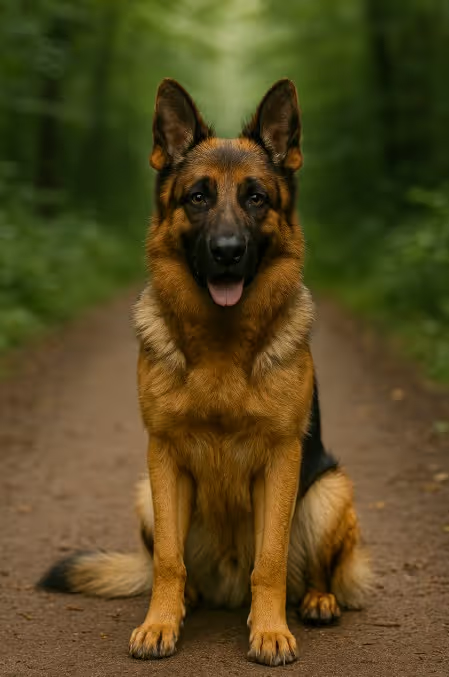The German Shepherd Dog (GSD) is one of the most intelligent, loyal, and versatile breeds in the world. Known for their work ethic and protective instincts, GSDs excel as family companions, service animals, and working dogs in police, military, and search-and-rescue roles. They thrive in homes where they can be both mentally and physically stimulated, and form unbreakable bonds with their humans.

The German Shepherd originated in Germany in the late 19th century, developed by Captain Max von Stephanitz with the goal of creating the ideal herding and working dog. Officially recognized in 1899, the breed quickly gained international recognition for its intelligence, strength, and trainability. It became especially prominent during World Wars I and II as a military and police dog and is now among the most popular breeds globally.
A powerful, agile, and noble-looking breed built for endurance and performance.
German Shepherds shed year-round and "blow" their coat seasonally.
Highly energetic and driven, the GSD requires regular, vigorous exercise.
Exceptionally intelligent and eager to learn, but needs early and ongoing training.
Balanced nutrition is essential to maintain this active breed’s muscular physique and joint health.
While generally healthy, the breed is prone to certain inherited conditions.
German Shepherds are common, but quality varies—reputable sources are critical.
Are German Shepherds good family dogs?
Yes—with proper socialization and training, they are loyal and protective companions.
Do German Shepherds shed a lot?
Yes. They are heavy shedders and require regular brushing, especially during coat-blowing seasons.
Are German Shepherds hypoallergenic?
No. They are not considered hypoallergenic.
How much exercise does a German Shepherd need?
At least 90 minutes daily of both physical and mental stimulation.
Can German Shepherds live in apartments?
Only if sufficiently exercised and mentally stimulated—larger living spaces are preferred.
Are German Shepherds aggressive?
No, not inherently. With proper training and socialization, they are stable and confident.
How long do German Shepherds live?
Typically 9 to 13 years, depending on lineage and health care.
Do German Shepherds bark a lot?
They are naturally vocal and protective. Early training can help manage barking.